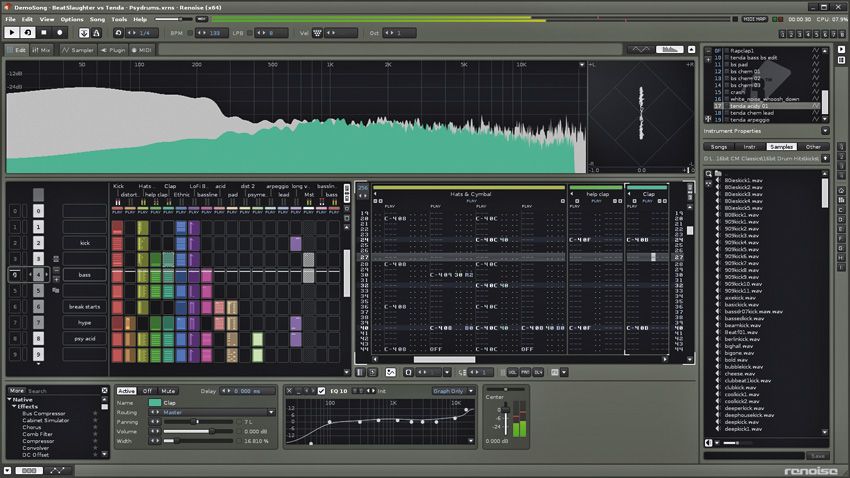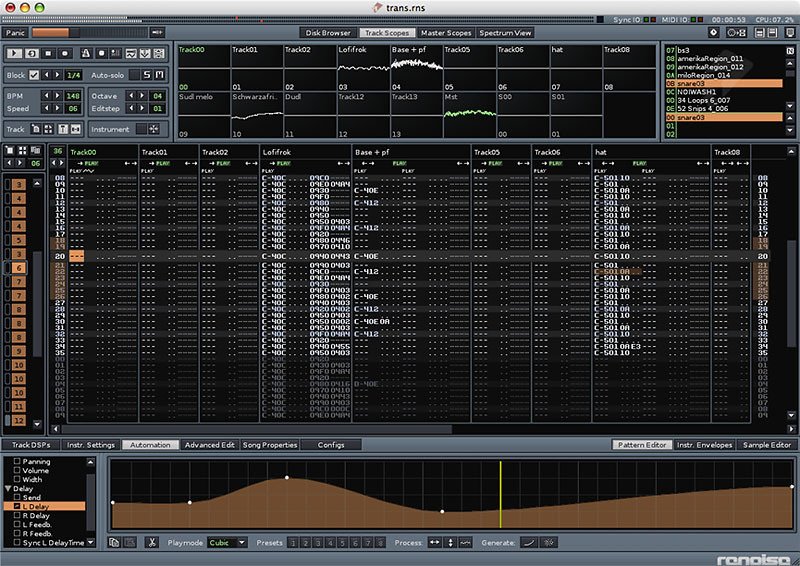

When all else fails, browse the forums or see if anyone in IRC chat can help. But seriously, there are tons of documentation on the Renoise website. Instead, make several smaller patterns and sequence them.ĥ) Documentation. A newbie mistake is to try to make one gigantic pattern. Other sequencers have a timeline, Renoise has patterns that you chain together to make a song. In Renoise, instruments go anywhere, tracks are what you make of them. For example, other sequencers have a very strong relation between track and instrument.

You must unlearn what you know in order to be a jedi master. Pattern Commands are special columns to the right of notes lets you take sample manipulation to the next level.Ĥ) If you don’t know trackers, then forget everything you learned about other DAW workflows. It’s a cool print out that folds up and sits pretty on your desk. This DIY reference was created by a user in the Renoise forums.
#RENOISE GOOD PIANO SAMPLES PDF#
Enthusiastic users show off their tunes, some even make "Do It Yourself" tutorials for good measure.ģ) Download the "Pattern Command Quick Reference Card" PDF file.
#RENOISE GOOD PIANO SAMPLES PRO#
PRO TIP: Tutorials and Demo Songs are in the Help menu.Ģ) YouTube is your friend. Anyone familiar with trackers will tell you that this is how it’s always been done, this is how it always should be, file sharing since the days of Amiga. Move some notes around, press the escape key and jam on the QWERTY keyboard. When you get bored of clicking, try remixing. Renoise will happily chug along as you explore each and every facet of the sequencer. Find one you like, load it up, press the spacebar and start clicking around. Here’s what he suggests:ġ) XRNS files are source code. So I asked Montreal-based Dac Chartrand of Renoise, who is also the man who keeps tabs on the community, to share his tips. The time investment is the likely barrier. But what if you’re new to Renoise, or new to trackers in general, and want to experiment? You don’t even need to make a cash investment: you can start to experiment with a relatively full-featured demo version on Mac, Windows, and Linux. Renoise users have one way of evangelizing why they love their tool, which is to show off, as seen in the excellent video above. So we’re pleased to have our Renoise + Indamixx contest going, not only for existing users, but newcomers, too. And Renoise is a terrific way to learn a ground-up approach to production, because you get the quick workflow of the tracker without having to sacrifice so many of the “comforts of home” we’re used to in modern DAWs. Piano rolls and fake multitrack tape turn out not to be the only way to conceptualize how music is put together in digital form.


 0 kommentar(er)
0 kommentar(er)
